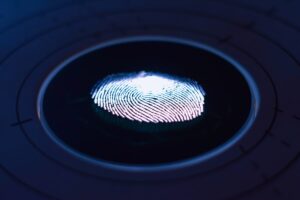Scripture: Genesis 37
Learning Objectives:
- Students will review the first part of Joseph’s story when his brothers told Jacob that he had been killed by an animal.
- Students will explore the basics of crime scene investigation through finger printing and handwriting analysis.

Guiding Question: How can clues be used to investigate a scene?
Materials: white paper, ink, pens/pencils, magnifying glass
Procedure: Review how Joseph’s brothers tried to hide the truth from their father by saying that Joseph was eaten by an animal. Discuss that when a crime happens detectives can investigate. CSI stands for Crime Scene Investigation and FBI stands for Federal Bureau of Investigation. Some methods are very complicated, but others are quite simple. Introduce fingerprinting.
Explain that God gave us each a special and unique print. Give each student a chance to lightly press their thumb in ink and make a mark on a piece of paper. Show students examples of the 7 types of thumbprints. (This site shows pictures of examples.) Help students identify their type of thumbprint. Then students can write their name lightly on the back of their paper. Divide students into groups of 4. Select one student in each group to make a second thumb print. The students mix up the original prints. Then, have the students who did not make a new print find the print that matches the student who did make a second print. They can explore using magnifying glasses to analyze the prints.
Next, give students paper and have them write a sentence and repeat the exercise by trying to match handwriting. First students can do it without disguising their writing. After they have tried that, they can try to do it but disguise their handwriting.
Discuss what types of clues might have been available to Joseph’s father when he was shown the coat. (How the coat was torn, the sheep’s blood, his sons’ reactions.) Explain that a “staged” crime is one that is set up to make someone believe that something false occurred. Discuss the importance of questioning evidence and searching for proof.
Additional Questions:
- Was the handwriting or the thumbprint easier to solve? Which is probably more reliable?
- Compare and contrast trying to solve the handwriting when it was disguised versus when it was natural.
- How helpful was the magnifying glass? Did you notice anything new with it?
- What questions could Jacob have asked his sons in order to investigate Joseph’s staged death further?
Supplemental Activities:
- Set up a scene for students to solve. Create a problem that relate to your students and leave hints such as tracks, fingerprints, handwriting, notes, and other clues in your story that kids might pick up on.
- The internet has several online mystery case files for kids that students can explore. Make sure to check out any sites for safety and appropriateness before suggesting them to students.
- Students can research other methods used to solve mystery cases including dogs, DNA tests, footprints/ tracks, etc. What could Jacob have done if he had our modern investigation sciences?
Written by: Savannah Negas
